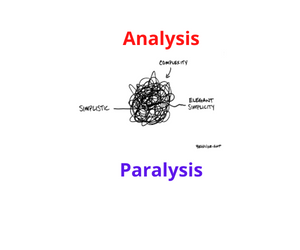With new rules coming into effect on Jan 1 2015, this is the ninth in a series of posts on how banks and FI’s might adapt.
Most banks have what one might politely term a heap of coagulated spaghetti in this area: too many accounts, too many people able to open accounts and too many chefs. The first step to having control is to set rules about who can open the accounts. The next is to control the quantity. Even if there is a good degree of control, because you have centralised responsibility and oversight over new accounts, if there are too many accounts, then this creates capacity and cost issues. Every account or depot needs to be reconciled. The more of them you have, the more effort that takes, even allowing for some accounts being easy to receive versus a SWIFT statement. For Nostros, the resulting balances have to be managed, and for depots or custodians, the assets need to be serviced; for example, you might need to collect a dividend. Now, just imagine that there is a rights issue and that you want to exercise those rights; if your cake of, say, 10,000 shares is sliced up among several locations, that just gives you more opportunity to get things wrong.
In your personal world, you would have one account and use it for everything. You might also want a savings account to keep certain money separate. On the credit card front, having just one is probably fine, day-to-day. But if you are travelling a lot, it might be tricky. Not every location will take Amex or MasterCard. Now, we could philosophise over the finer points, but the reality is that one is ideal, but two are probably necessary.
Taking that to the banking world, it would imply that the many areas of a bank should use the same Nostro or depot. This puts certain constraints on various parts of the life cycle. Cash management must, by definition, be centralised so there is only one pot of cash. The same applies for the settlement of securities. Lastly, this imposes a certain discipline on the reconciliation function. When there are breaks, because the ledgers do not match the external records, a higher degree of coordination is demanded of the reconciliations team to manage those exceptions across the whole bank than when there is just one account. Securities tend to move “against payment”, so there are fewer exceptions than in the world of Nostros, where payments are one-sided and it is very common to receive money you were not expecting.
There are some legitimate reasons for having more than one Nostro or depot. Not many, though.
Client Money
Various countries have regulations requiring a client’s fully paid-for securities to be kept separate from an FIs own proprietary ones. As a rule, one client omnibus is sufficient.
Cash is not quite the same. In general, cash deposited with a bank can be pooled with the bank’s own cash. It is common in developed countries to have some form of “deposit insurance”; this might cover the first $100k or equivalent that a client may have in an account with a bank that goes bankrupt
In the prime brokerage business, the emerging standard is to have individual depots and accounts in the real world for each individual client fund.
This applies for both Nostros and Depots.
Derivatives
The introduction of the Dodd-Frank rules has included a push to provide more investor protection. One of the concerns has been around client collateral in the event of bankruptcy.
One level of protection is between the clients and the firm. This is easily achieved with a single omnibus depot for clients. The next level is against what is called “fellow-customer risk”. This refers to the risk that if a bank has many clients and one goes bankrupt, the Derivatives Clearing Organisation (DCO), which is where the trades are cleared and collateral is held, will not know exactly which slice of the total customer collateral pie belongs to which customer. The evolving standard here is something called LSOC, Legally Separated, Operationally Co-Mingled. This means for Ops folks that they can operate one collective omnibus depot for all their clients. It does, though, involve some extra reporting to the DCO; you have to tell the DCO which slice of the collateral pie belongs to which client
For a more detailed explanation, see the following from the CME:
This applies for both Nostros and Depots.
ICSD vs. CSD
In the securities world, a security can settle in more than one place. A Swiss equity might settle in SIX or in Euroclear. In those cases, a domestic depot in addition to the ICSD one at Euroclear is legitimate.
This applies to Depots.
Centralisation is something that most banks practice, although the degree of rigour will vary. In times past, a particularly bad practice was to deal with a broker and then say, “Hold the securities for us”. The following case study illustrates the point.
Case Study: Tight Central Control – Swiss bank UBS provides an interesting case study in network management.
A colleague from what used to be Swiss Bank Corp (SBC), before the merger that created today’s UBS, told me that even in the early 1990s, SBC had several hundred depots in Germany. Every time they dealt with a broker, they would simply tell the broker to hold the shares for them. Far too many.
As CLS was being introduced for the FX product in the first days of the 2000s, UBS looked at its network management set-up and determined that it wanted to have a centrally controlled Nostro set up. All subsidiaries were commanded to close their Nostros and move them to UBS Zurich. That entity was capable of offering Nostro services to all the group companies in any currency, a “bank for the bank”, as it were. A central diktat was issued, and centralisation was strictly enforced.
UBS insiders would tell me how they had used CLS as the driver for change and figured they were up $100 million each year. Back then, I used to think they were exaggerating and that maybe the real number was half of that. Now, in hindsight, I would actually deem that number quite credible.
Lessons Learned: Spaghetti. I would use that word as an adjective to describe the typical picture of nostros and depots in an FI. The Network Management function (NetMan) is one that has to be run based on a central diktat. There is a limited set of of good reasons for having extra accounts. Keeping a lid on the spread of Nostros and Depots is an important discipline.
Next time; some discussion on the various approaches to this.
A personal request: Finally. I have ventured into self-publishing. The not so creatively titled, but practical guide: “Cash & Liquidity Management: Mastering the Challenges of New Regulations and a Changing Marketplace” is now available in print and on Kindle. All the bits form the Blog are there, together with a lot of detail on current challenges. Many of those challenges will take effect on Jan 1 2015. Time to be well informed!
UK: For the print version and Kindle users: Click Here
US: For the print version and Kindle users: Click Here
Hot on its heels is a book on wider operational matters: The Bankers’ Plumber’s Handbook. Coming soon.
Thanks for your support and thanks to the numerous contributors.
Share on:



